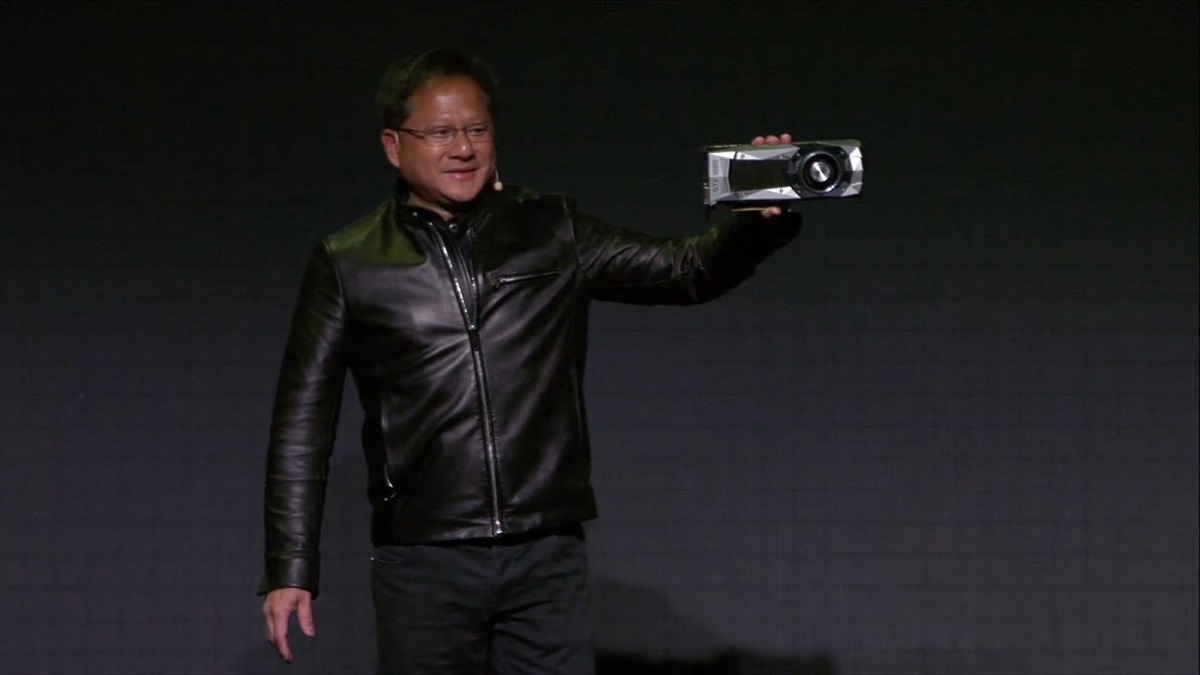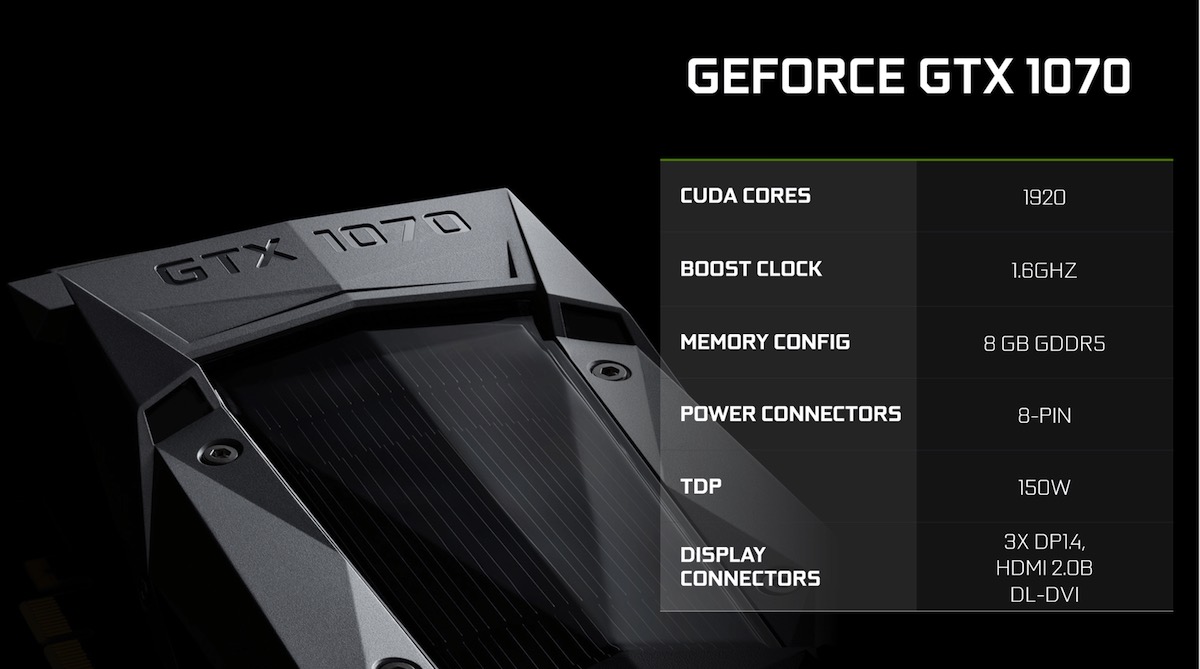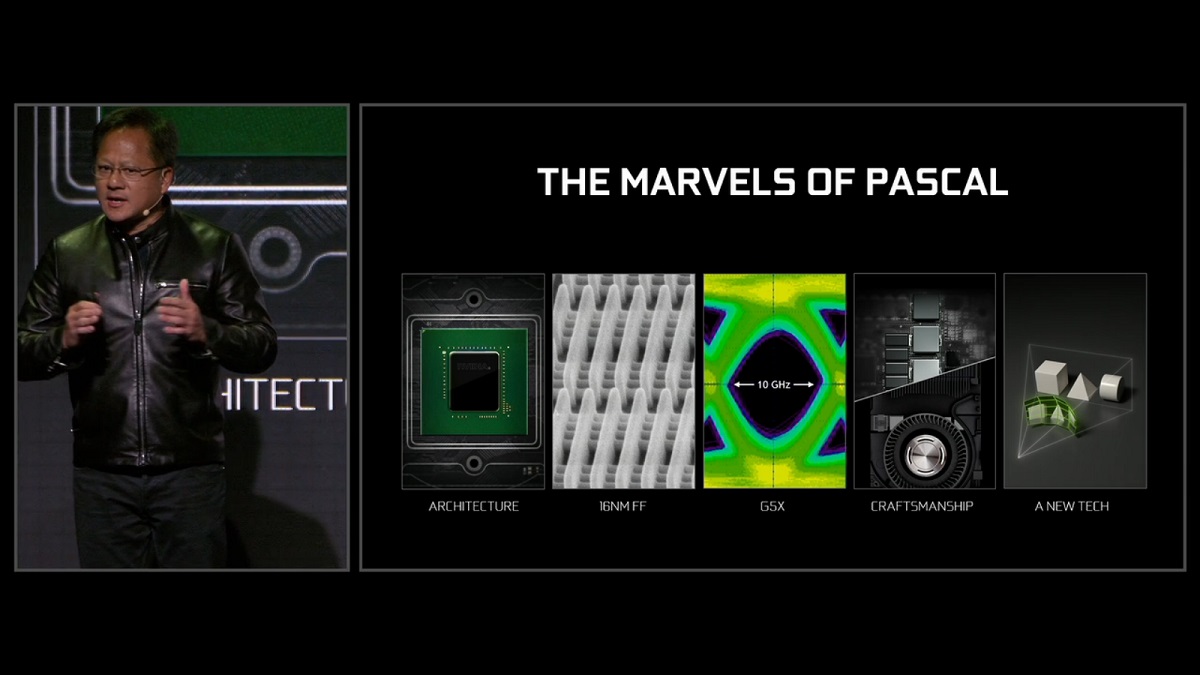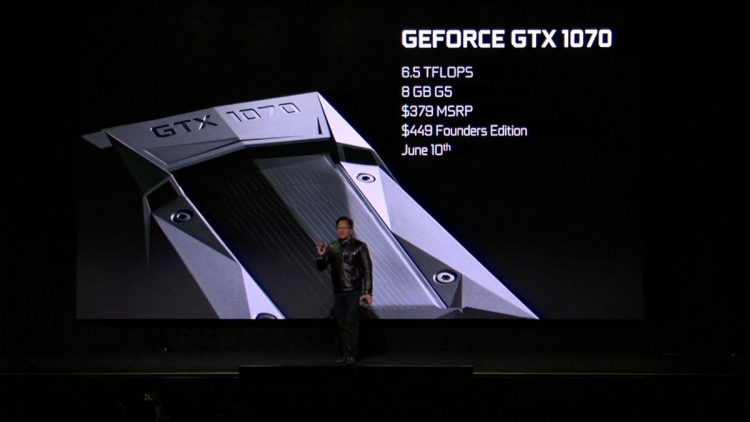While the spotlight currently shines bright on Nvidia’s beastly GTX 1080 graphics card, those who are keen on getting a more affordable graphics card are probably more interested in the GTX 1070 instead. The GTX 1070 was only featured towards the end of Nvidia’s event a few weeks ago – with little information shared. Well, now Nvidia has provided consumers with several key specifications of its GTX 1070 graphics card.

Like its big brother, the GTX 1070 is fitted with a 16nm Pascal GP104 GPU. Despite this, the Pascal GPU included in the graphics card is a cut-down variant of the GP104-400 GPU that is currently being used with the GTX 1080; which means that the GTX 1070 will come with a Pascal GP104-200 GPU instead. In addition, the GTX 1070 has a total CUDA Core (Steam Processor) count of 1,920, which is 640 less compared to its more powerful counterpart.

Oddly, instead of providing the base clock for the GTX 1070, Nvidia has instead stated the boost clock for the graphics card. Currently rated at 1600MHz, the clock speed of the GTX 1070 isn’t that far off from the GTX 1080 (1733MHz). Speaking of being far off, the major difference that sets aside both next generation graphics cards by Nvidia would be their memory standards. While the GTX 1080 uses Micron’s GDDR5X standard, Nvidia’s GTX 1070 will be utilising the older GDDR5 standard instead. Both graphics cards will have a memory capacity of 8GB when released.

According to Nvidia, the GTX 1070 will have a TDP of 150W, which is drawn via a single 8-pin power connector – like the GTX 1080. Display outputs include: three Display Port 1.4 ports; one HDMI 2.0b port; and one dual-link DVI port. Knowing all this, it’ll be interesting to see how the GTX 1070 stacks up against the GTX Titan X, since Nvidia claimed that the GTX 1070 will be faster than the Maxwell king.
Regardless, Nvidia’s GTX 1070 makes for one very, very interesting graphics card to look out for. Not only does it perform better than most high-end Maxwell graphics cards (according to Nvidia), it’s also priced significantly lower too. With these kind of specifications, it would be pretty hard to turn down a graphics card that’ll cost merely US$379 (approximately RM1,515) or US$449 (about RM1,795) for the Founders Edition.
(Source: VideoCardz, Guru3D)



